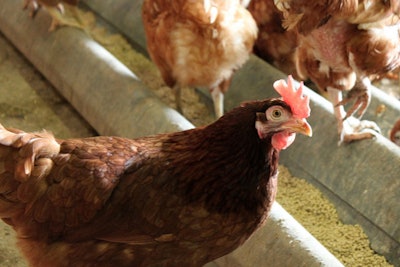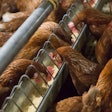
After outbreaks of avian influenza in their respective poultry sectors, the veterinary authorities of Mexico and Belgium have introduced new measures aimed at preventing the further spread of the disease.
H5 and H7 highly pathogenic avian influenza (HPAI) virus subtypes are under control in Mexico, according to the country’s veterinary service, Senasica, and the government and poultry producers are working to eradicate the infection.
Producers are being urged by the service to reinforce biosecurity measures on their farms, vaccinate their birds, and to notify the authorities if they observe any abnormal level of mortality in their flocks.
Recognizing the importance of the poultry sector to Mexico’s current and future food security as well as to the livelihood of millions of its citizens and farmers, Senasica says it will continue epidemiological surveillance programs to control and contain high-risk diseases like HPAI.
The agency has introduced a new protocol for biosecurity of poultry farms (GBGA), which aims to identify and correct any gaps that threaten the country’s poultry industry.
Farms will be required to comply fully with a set of minimum biosafety measures, and poultry producers will need to have their compliance verified not only by their own veterinarian, but also by an independent veterinary professional, and finally by Senasica.
Since March of this year, Senasica has officially reported 15 HPAI outbreaks linked to the H7N3 virus subtype to the World Organisation for Animal Health (OIE). Almost 279,000 poultry have been directly affected in these outbreaks, four of which occurred on commercial poultry farms.
Afghanistan: H5 disease situation partially closed
Over the past week, OIE has received no reports of new HPAI outbreaks linked to the H5 or H7 virus variants.
Afghanistan’s agriculture ministry has confirmed to the OIE that there have been no new outbreaks linked to an H5 HPAI virus that caused three outbreaks of the disease early last year.
The agency now considers the disease situation “resolved” in Kabul in the east of the country after two outbreaks in small flocks in January 2018. One month later, the virus was confirmed at a commercial farm in Herat, which is in the west of the country and borders Iran. No further outbreaks have been recorded since that time in Afghanistan.
Belgium introduces new measures to control H3 avian influenza
The H3 type of the avian influenza virus has been detected at another farm in Wallonia. This is the latest in a series of outbreaks affecting dozens of poultry units in Flanders, reports Brussels Times, citing local media.
The virus causes a drop in egg laying, and can make birds more susceptible to other diseases, but it poses no threat to human health, according to the report.
Last week, new measures came into place to prevent the spread of the disease, raising the level of preventative measures and imposing new rules for affected farms, according to the federal agency for safety in the food chain, FAVV.
Among the newly introduced measures for poultry facilities testing positive for the H3 virus are the requirement to destroy all unhatched eggs, and birds can only be transported to the slaughterhouse. Following complete depopulation of the company’s facility and thorough cleaning and disinfection, the house must remain empty for at least 21 days before repopulation. All crates, egg trays and equipment must undergo double cleaning and disinfection, and all litter, manure and slurry must be treated with an authorized biocide, with the waste stored in covered containers.
These latest measures are in addition to those that already apply across Belgium, and are similar to those put in place during outbreaks of HPAI linked to the H5 and H7 virus subgroups.
So far, most of the infected farms in Belgium have been located in the province of West Flanders, according to FAVV, but the virus has also been detected in East Flanders, Antwerp, Liege and the province of Luxembourg. Symptoms observed in affected birds are depression, pale eggs, sudden egg drop — 20-100% — reduction in feed and water intake, and mortality (up to 50% or more).
View our continuing coverage of the global avian influenza situation.


















